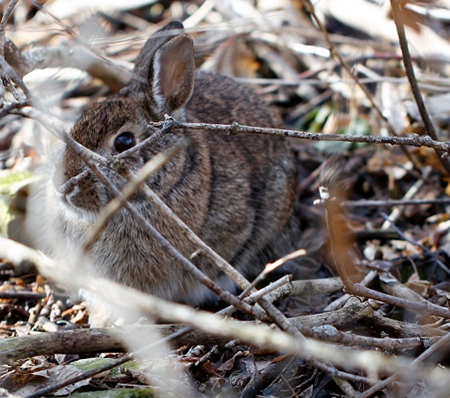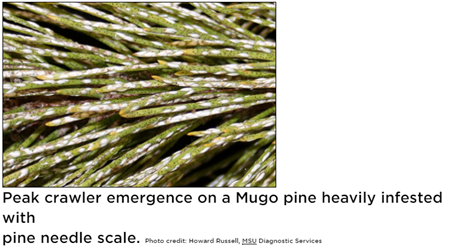Click below to listen to my 2 min. Garden Bite radio show: Bunnies – the bad and the good? Monitoring your plants
It’s always a good idea to monitor your shrubs and newly planted trees this time of year to see if there’s been bunny, vole or deer damage.

If you wrapped the new trees with hardware cloth or put chicken wire around your shrubs, then good for you, you shouldn’t have anything to worry about! I’ve lost a few shrubs by not paying attention.

Hardware cloth comes in a variety of sizes, you’re best to buy one with small mesh. Now on to Public Enemy Number ONE… maybe….

Turns out, rabbit poop is really good for the garden… Those little brown pellets are a bonanza for your soil. They’re filled with nitrogen. If you have a pet rabbit, be sure to put their poo in your compost pile. aka Bunny Honey!

On a side note: snow is a GREAT insulator. If you have newly planted trees and shrubs, when you’re shoveling your sidewalk, pile some of that snow up around them!

As much as the rabbits irritate me, they do leave behind something of value. The rabbits waste, those little brown pellets, actually make great fertilizer. They decompose quickly and are richer in nutrients than chicken manure! They carry no contaminants so you can freely let the bunnies do their business around your plants. Now if they’d just do THAT without eating the plants.
If you have mugo pines, check for pine needle scale. This will look like white flecks on the needles.

A lime sulfur spray can be used now to kill the pest. Other hard shell insects can be treated with lime sulfur while the plants are dormant but check the label and make sure your particular plant can handle it. Don’t use lime sulfur on Viburnums and Maples. Lime sulfur can also stain siding and sidewalks, so use it carefully as you would any chemical. Check the package directions for proper amounts and delivery system for dormant usage.
